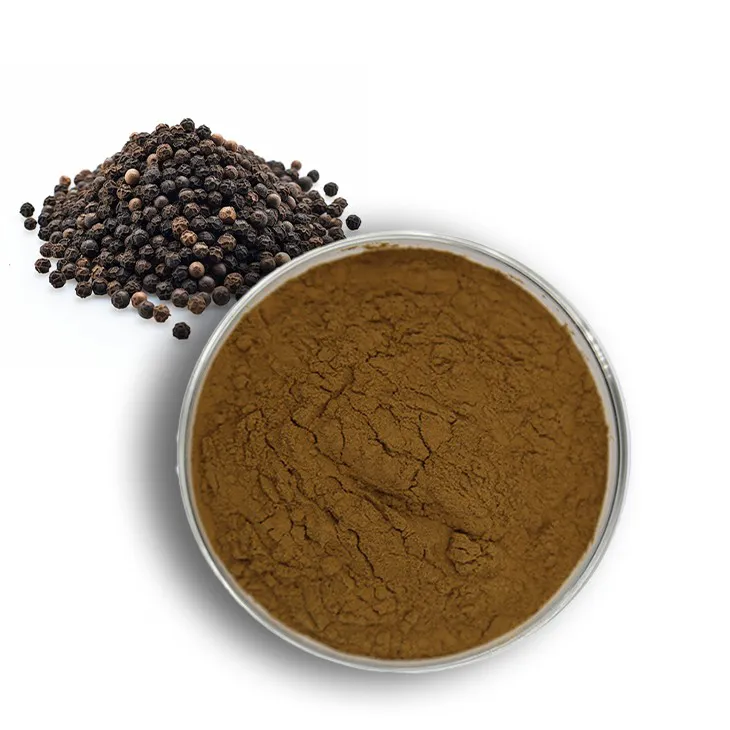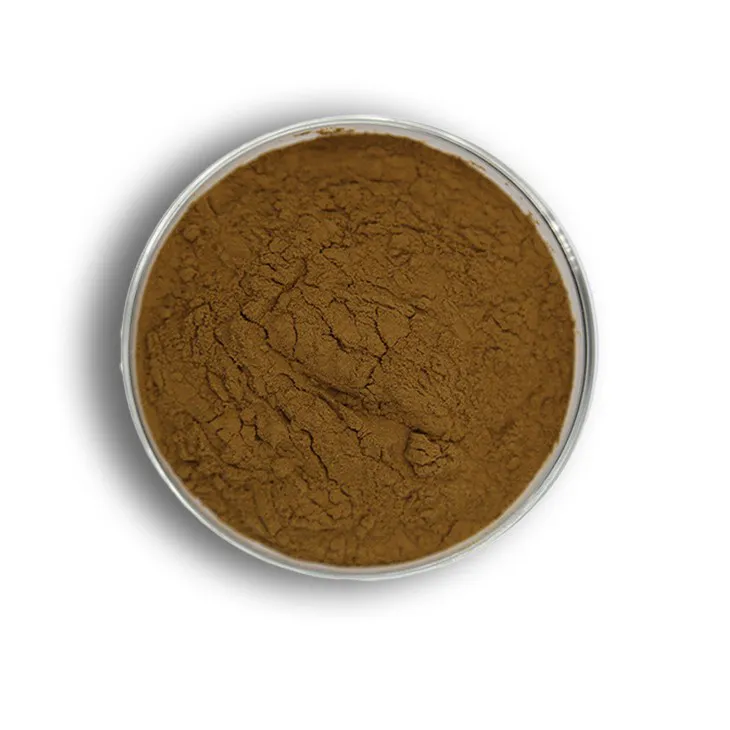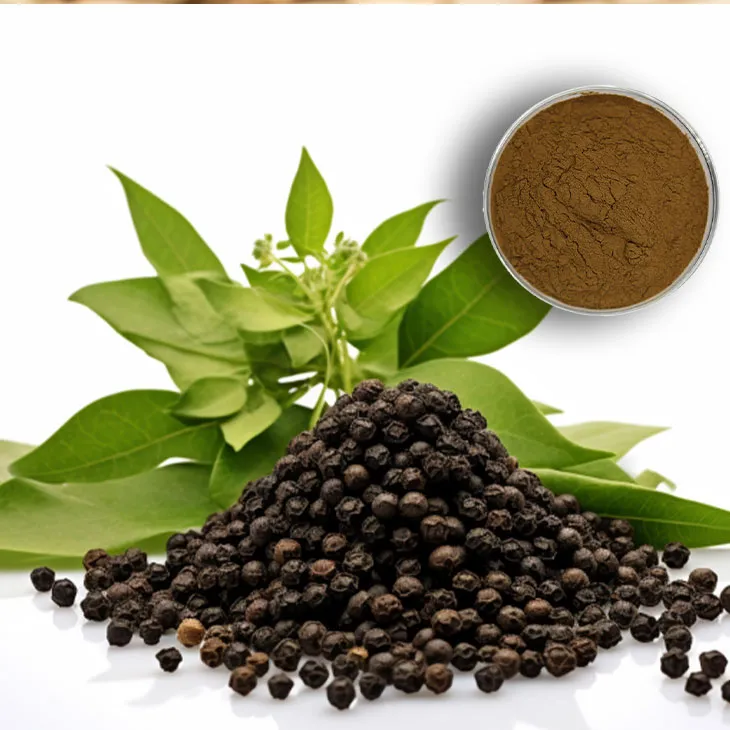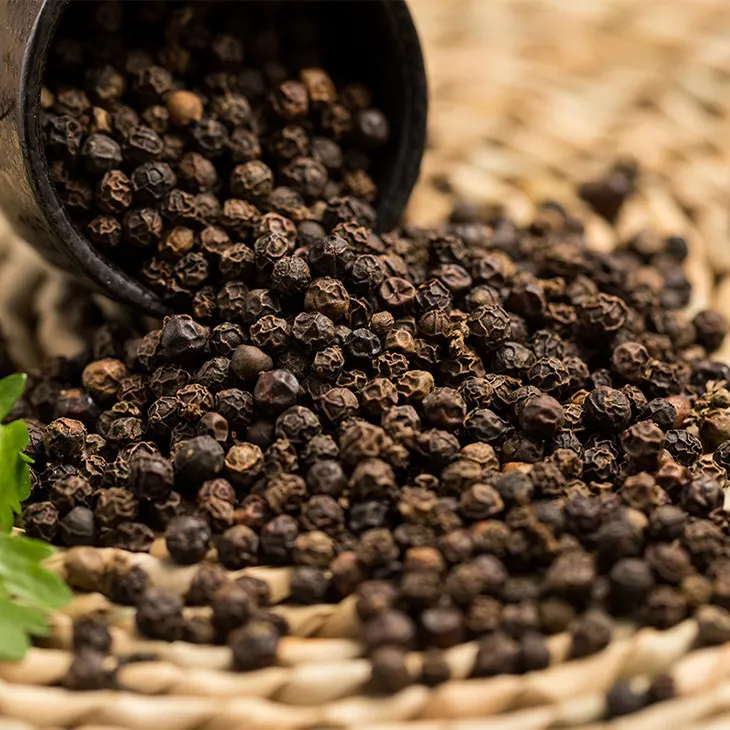- 0086-571-85302990
- sales@greenskybio.com
The process of extracting the main components of black pepper from black pepper extract.
2024-11-29

1. Introduction
Black pepper (Piper nigrum) has been a staple in the culinary world for centuries, renowned for its pungent flavor and aroma. Beyond its role in food, it also holds potential health benefits, which has led to an increased interest in isolating its main components from the extract. These main components include piperine, volatile oils, and other bioactive compounds. The extraction process is complex and involves multiple steps, each crucial in obtaining pure and useful substances for various applications such as in the food, pharmaceutical, and cosmetic industries.

2. Initial Handling of Black Pepper Extract
2.1. Source and Preparation of Black Pepper Extract
Black Pepper Extract can be obtained from black peppercorns through various methods. Typically, the peppercorns are first ground into a fine powder. This powder serves as the starting material for extraction. The quality of the peppercorns used is of utmost importance as it directly affects the quality of the extract. High - quality, fully ripened peppercorns are preferred as they are likely to contain a higher concentration of the desired components.2.2. Solvent Selection
The choice of solvent is a critical step in the initial handling of the extract. Common solvents used for black pepper extraction include ethanol, methanol, and ethyl acetate. Ethanol is often favored due to its relatively low toxicity and its ability to dissolve a wide range of compounds present in black pepper. The solvent is chosen based on its polarity, which should be appropriate to dissolve the target components while leaving behind unwanted substances. For example, piperine, which is one of the main components, is more soluble in polar solvents like ethanol.
3. Extraction Methods
3.1. Maceration
Maceration is one of the simplest and most commonly used extraction methods. In this process, the ground black pepper powder is mixed with the selected solvent (e.g., ethanol) in a sealed container. The mixture is then left to stand for a period of time, usually several days to weeks. During this time, the solvent penetrates the powder and dissolves the soluble components. The length of the maceration period depends on factors such as the type of solvent, the particle size of the powder, and the desired extraction efficiency.3.2. Soxhlet Extraction
Soxhlet extraction is a more efficient method compared to maceration. It involves continuously cycling the solvent through the black pepper powder. The solvent is vaporized, condensed, and then passed through the powder again. This cyclic process ensures that a large amount of the target components are extracted. However, Soxhlet extraction requires specialized equipment and is more time - consuming. It is often used when a high - yield extraction of relatively non - volatile components like piperine is desired.3.3. Supercritical Fluid Extraction (SFE)
Supercritical fluid extraction is a relatively modern and advanced method. In this process, a supercritical fluid, usually carbon dioxide (CO₂), is used as the solvent. Carbon dioxide is preferred because it is non - toxic, non - flammable, and has a relatively low critical temperature and pressure. At supercritical conditions, CO₂ has properties that are intermediate between a gas and a liquid, allowing it to effectively dissolve the target components from black pepper. SFE is particularly useful for extracting volatile oils as it can operate at relatively low temperatures, which helps to preserve the integrity of these thermally - sensitive compounds.
4. Filtration and Separation
After the extraction process, the resulting mixture contains the dissolved components along with undissolved solids (such as cell debris from the black pepper). Filtration is the next step to separate these solids from the liquid extract. This can be achieved using various types of filters, such as filter paper in a simple filtration setup or more advanced membrane filters for finer separation.
4.1. Gravity Filtration
Gravity filtration is a basic method where the extract is poured through a filter paper in a funnel. The liquid slowly passes through the filter paper due to the force of gravity, while the solids are retained on the filter. This method is suitable for relatively coarse separations.4.2. Vacuum Filtration
Vacuum filtration is a more efficient method, especially when dealing with larger volumes of extract. In this method, a vacuum is applied to the receiving flask below the filter. This creates a pressure difference that accelerates the filtration process, allowing for faster separation of the solids from the liquid.4.3. Centrifugal Separation
Centrifugal separation can also be used in some cases. The extract is placed in a centrifuge tube and spun at high speeds. The centrifugal force causes the denser solids to sediment at the bottom of the tube, while the liquid extract can be decanted or pipetted off. This method is particularly useful for separating small particles or emulsions that may not be effectively removed by filtration alone.
5. Concentration of the Extract
Once the extract has been filtered and separated from the solids, it usually contains a large amount of solvent. To obtain a more concentrated form of the extract containing a higher proportion of the main components, the solvent needs to be removed.
5.1. Rotary Evaporation
Rotary evaporation is a commonly used method for solvent removal. The extract is placed in a round - bottom flask and rotated in a warm water bath while a vacuum is applied. The solvent evaporates under reduced pressure and is condensed and collected separately. This method is efficient for removing volatile solvents like ethanol and methanol.5.2. Freeze - Drying
Freeze - drying, also known as lyophilization, is another option, especially for extracts that are sensitive to heat. In this process, the extract is first frozen and then placed in a freeze - dryer. The water or solvent in the frozen extract is removed by sublimation, which occurs when the solid (ice or frozen solvent) directly converts to vapor without passing through the liquid phase. This helps to preserve the integrity of the main components in the extract.6. Purification of the Main Components
After concentration, the extract still contains a mixture of various components. To isolate the main components such as piperine and volatile oils, further purification steps are required.
6.1. Chromatography
Chromatography is a powerful technique for purifying the main components. There are different types of chromatography that can be used, such as column chromatography, thin - layer chromatography (TLC), and high - performance liquid chromatography (HPLC).- Column chromatography involves packing a column with a stationary phase (e.g., silica gel or alumina) and passing the extract through the column. Different components in the extract will interact differently with the stationary phase and the mobile phase (usually a solvent), causing them to be separated as they move through the column.
- Thin - layer chromatography is a simpler form of chromatography where a thin layer of the stationary phase is coated on a plate. A small amount of the extract is spotted on the plate and then developed using a solvent. The different components in the extract will move at different rates on the plate, allowing for their separation and identification.
- High - performance liquid chromatography is a more advanced and precise form of chromatography. It uses high - pressure pumps to force the mobile phase through a column filled with a very fine stationary phase. This allows for highly efficient separation of the components in the extract, especially for complex mixtures. HPLC is often used for the final purification and quantification of the main components.
6.2. Recrystallization
Recrystallization is another method for purifying the main components. For example, if piperine is the target component, the concentrated extract can be dissolved in a suitable solvent at a high temperature. As the solution cools, piperine will crystallize out of the solution while impurities remain in the solvent. The crystals can be collected by filtration and further washed to obtain a purer form of piperine.7. Characterization and Quality Control
Once the main components have been purified, it is essential to characterize and perform quality control on them.
7.1. Spectroscopic Techniques
Spectroscopic techniques such as infrared spectroscopy (IR), ultraviolet - visible spectroscopy (UV - Vis), and nuclear magnetic resonance spectroscopy (NMR) can be used to identify and characterize the main components. IR spectroscopy can provide information about the functional groups present in the compound, UV - Vis spectroscopy can be used to study the electronic transitions in the molecule, and NMR spectroscopy can give detailed information about the molecular structure and the connectivity of atoms.7.2. Chromatographic Analysis
Chromatographic analysis, such as HPLC, can be used not only for purification but also for quality control. By comparing the chromatographic profile of the purified component with a standard, it is possible to determine the purity and identity of the component. Any impurities or unexpected peaks in the chromatogram can indicate a problem in the extraction or purification process.7.3. Physical and Chemical Tests
Physical and chemical tests can also be carried out. For example, melting point determination can be used for piperine. The measured melting point should be within a certain range if the piperine is pure. Other tests such as solubility tests and pH measurements can also provide information about the quality of the purified components.8. Conclusion
The extraction of the main components from black pepper extract is a multi - step process that involves careful selection of extraction methods, separation techniques, purification steps, and quality control measures. Each step is crucial in obtaining pure and high - quality main components such as piperine and volatile oils. These components have significant potential in various industries, including food, pharmaceuticals, and cosmetics. As research continues, more efficient and sustainable extraction and purification methods may be developed, further expanding the applications of black pepper - derived products.
FAQ:
What are the main components in black pepper?
Black pepper contains various components such as piperine, essential oils (which include sabinene, limonene, etc.), and flavonoids. Piperine is one of the most important and characteristic components, contributing to the pungency of black pepper.
Why is it necessary to extract the main components from black pepper extract?
Extracting the main components is important for several reasons. In the food industry, it can be used to standardize the flavor profile in products. In the pharmaceutical and nutraceutical fields, these components may have potential health benefits like anti - inflammatory, antioxidant properties, etc. Also, it allows for more precise control in various applications compared to using the whole black pepper extract.
What are the initial steps in the extraction process?
The initial steps usually involve obtaining a high - quality black pepper extract. This may start with the selection and grinding of black pepper. Then, a suitable solvent is often used to dissolve the components in the extract. Common solvents can be organic solvents like ethanol or ethyl acetate, depending on the solubility of the target components.
How is purification of the main components achieved?
Purification can be achieved through several methods. One common method is chromatography, such as column chromatography or high - performance liquid chromatography (HPLC). These techniques can separate the main components based on their different affinities to the stationary and mobile phases. Another method could be crystallization, where the components are made to form crystals under specific conditions to separate them from impurities.
What are the challenges in the extraction process?
Some challenges include ensuring the selectivity of the extraction method to only target the main components and avoid extracting unwanted substances. Also, maintaining the integrity and activity of the components during the extraction and purification processes can be difficult. For example, some components may be sensitive to heat, light, or certain chemicals used in the process.
Related literature
- Extraction and Characterization of Bioactive Compounds from Black Pepper"
- "Piperine: The Main Bioactive Component of Black Pepper - Extraction and Applications"
- "Advances in the Extraction of Essential Oils from Black Pepper"
- ▶ Hesperidin
- ▶ citrus bioflavonoids
- ▶ plant extract
- ▶ lycopene
- ▶ Diosmin
- ▶ Grape seed extract
- ▶ Sea buckthorn Juice Powder
- ▶ Beetroot powder
- ▶ Hops Extract
- ▶ Artichoke Extract
- ▶ Reishi mushroom extract
- ▶ Astaxanthin
- ▶ Green Tea Extract
- ▶ Curcumin Extract
- ▶ Horse Chestnut Extract
- ▶ Other Problems
- ▶ Boswellia Serrata Extract
- ▶ Resveratrol Extract
- ▶ Marigold Extract
- ▶ Grape Leaf Extract
- ▶ blog3
- ▶ blog4
-
Chinese Hawthorn Extract Powder Suppliers.
2024-11-29
-
The best Tongkat Ali extract in nature.
2024-11-29
-
Chinese Ginger Extract Powder Suppliers.
2024-11-29
-
Organic non - transgenic black rice extract.
2024-11-29
-
Shikone Extract
2024-11-29
-
Milk Thistle Extract
2024-11-29
-
Aminolevulinic acid
2024-11-29
-
Astaxanthin
2024-11-29
-
Bamboo Leaf extract
2024-11-29
-
Andrographis Paniculata Extract Powder
2024-11-29
-
Green Tea Extract
2024-11-29
-
White Willow Bark Extract
2024-11-29
-
Acerola Juice Powder
2024-11-29
-
Peppermint Extract Powder
2024-11-29





















